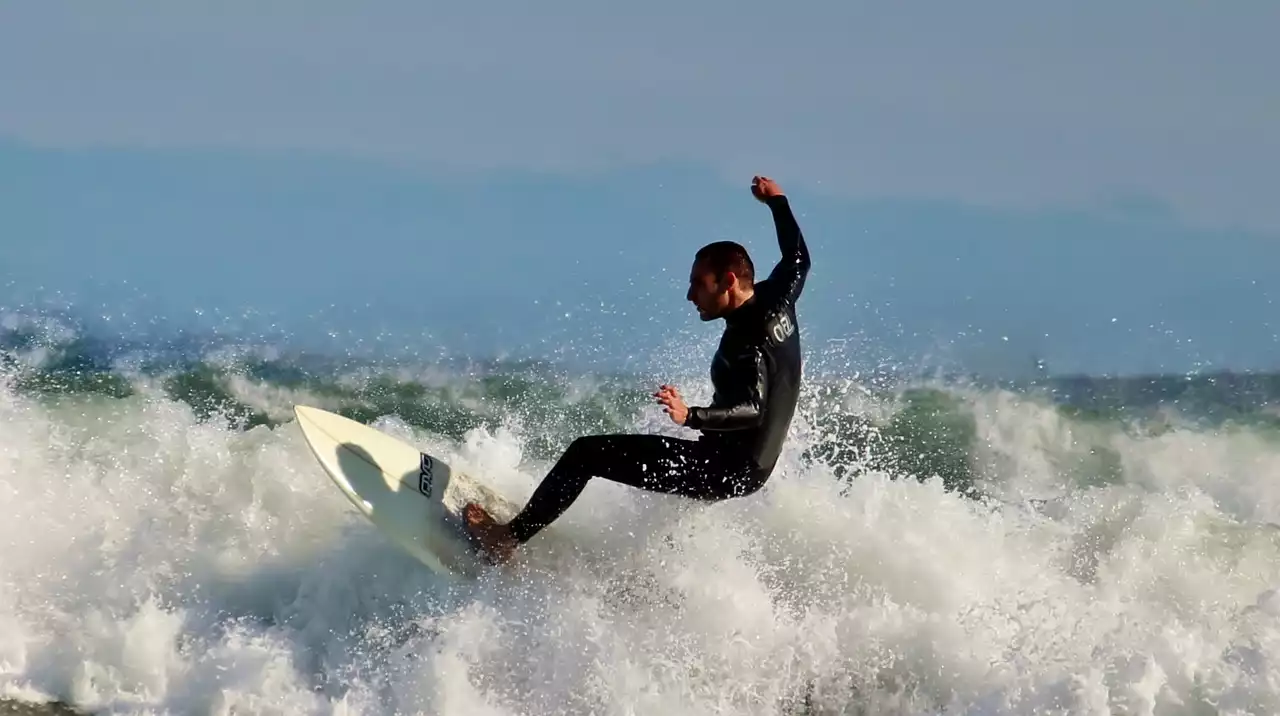Benefits of exercising for surfing
- Increased Balance
- Enhanced flexibility
- Better performance
- Better Health
- Increased confidence
- Increased enjoyment
- Increased strength
- Greater social interactions
- A greater sense of accomplishment You can see how exercising for surfing can improve a variety of essential components of your life. But what are these components, exactly? Let’s take a closer look at the benefits of exercising for surfing.
- Increased Balance
- Enhanced flexibility
- Better performance - Better health - Increased confidence - Increased enjoyment
- A greater sense of accomplishment
- You can see how exercising for surfing can improve a variety of essential components of your life. But what are these components, exactly? Let’s take a closer look at the benefits of exercising for surfing.
Surfing fitness exercises for beginners
As a beginner surfer, your main goal is to stay safe while you learn the sport. Because of this, you don’t need to spend a lot of time and energy developing strength and endurance; instead, your focus should be on building a clear skill set. That means you should focus on the fundamentals of surfing and make those the focus of your exercises. For example, make sure to focus on getting comfortable in the water, learn how to properly paddle and catch waves, and focus on safety first. Begin with short, low-intensity sessions and slowly increase the length and intensity of your workouts as you become more comfortable with the sport. If you’re new to the sport, you might also want to consider taking surfing lessons. Lessons can be a great way to quickly get the basics down before you can try to learn them on your own, and they can also help you stay safe while you learn how to paddle and catch waves.
Exercises for intermediate surfers
Once you’ve gotten used to the fundamentals of surfing, you can start to incorporate more advanced exercises. For example, you can increase the length and intensity of your workouts as you get used to more advanced moves and techniques, and you can also start to incorporate different types of equipment into your training. To help you get more out of your surfing training as you advance as a surfer, you should also incorporate exercises for surfing fitness tailored to your specific level of fitness. If you’re an intermediate surfer, for example, you might want to incorporate exercises geared towards increasing your upper-body strength, improving your core strength, and building your leg strength.
Advanced surfing exercises
Developing the strength and flexibility you need for surfing can take some time, so you should also consider incorporating exercises for surfing fitness into your routine that can help you build strength, flexibility, and stamina more quickly. In addition to building strength, these exercises will help you increase your flexibility, which is a key component of safe surfing. When choosing exercises for surfing fitness, you should also consider your level of experience with the sport. For example, if you’re an experienced surfer, you might want to add exercises focused on improving your balance and coordination, such as yoga poses. This can be a great way to stay flexible while increasing your coordination.
Building a workout routine for surfing
Once you’ve incorporated surfing fitness exercises into your routine, you can stay safe and efficient with your training and improve your strength, coordination, balance, and flexibility with every workout. You should also aim to incorporate both strength and cardiovascular training into your routine, which can help you improve your cardiovascular fitness, increase your metabolism, and burn calories at a faster rate. Before you begin, you should also establish a consistent training schedule that fits into your daily schedule, including a rest day between intense workouts. To help you stay safe while you train, you should wear supportive gear while lifting weights and a comfortable pair of shoes while you run or cycle.
Exercises to avoid for surfing fitness
- Pushing yourself too hard
- Overtraining
- Improper form
- Not listening to your body
- Hitting your head while working out
- Getting injured
- Taking supplements without consulting a doctor
- Exercising outside of your fitness level
- Excessive drinking
- Excessive partying
- Hooking up with a partner while you’re in the gym
- Avoid these exercises for surfing fitness if you want to stay safe and build a fit and healthy body quickly.
Exercise equipment for surfing fitness
When it comes to equipment for surfing fitness, you can often get by with little more than a surfer’s board, a pair of fins, and a life jacket. That said, if you’d like to improve your strength and balance while you surf, you might want to consider incorporating a few additional pieces of equipment into your training. For example, you can improve your balance and stability as well as your strength and coordination with a balance board, a weight training resistance device, or a step. A weight training resistance device can also help you improve your strength and power while it helps you work on your balance and coordination.
Exercise to avoid surfing fitness
- Doing nothing
- Not drinking enough water
- Not stretching
- Not getting enough sleep
- Eating the wrong foods
- Drinking too much alcohol
- Hitting the beach too hard
- Eating too many processed foods
- Eating too many fatty foods
- Smoking
- Not wearing your life jacket
- Not wearing your helmet - Not wearing your goggles
- Not wearing sunscreen
- Not wearing protective clothing
- Not wearing sturdy shoes



.png?size=50)


